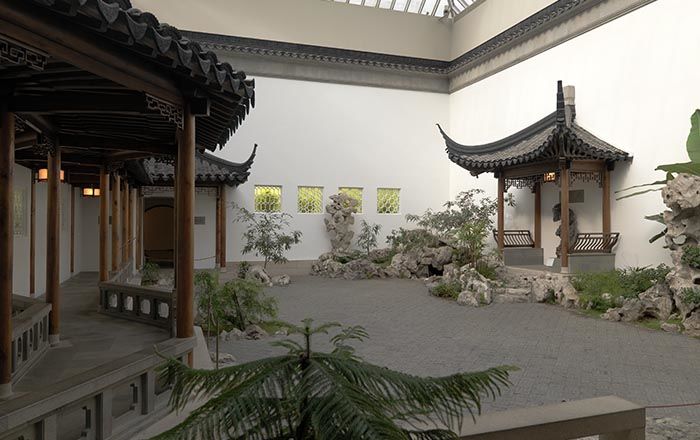Tsujigahana Textile Fragment with Wild Ginger Leaves and Sprays of Wisteria
Not on view
Tsujigahana, literally “flowers at the crossroads,” evokes images of flowers blossoming amid intersecting pathways; this combination of motifs is visible on many fragments. While a few documentary sources of the Muromachi (1392–1573) and Momoyama (1573–1615) periods contain the word tsujigahana in descriptions of garments, it is not clear whether it was used to refer to a specific motif, a dyeing technique, or a color. Uncertain about the original meaning of the term, twentieth-century scholars redefined tsujigahana as a textile technique. The word is now used to describe a type of textile characterized by stitch-resist dyeing and ink painting on a light, plain-weave silk ground, sometimes further decorated with embroidery and the application of gold-leaf. The term is generally linked to sixteenth-century fragments, which derive from garments originally worn by mainly women and young boys. Subsequently, the garments were disassembled; surviving fragments survived are coveted objects in the hands of collectors.
A balanced combination of resist-dyeing and ink painting became the characteristic of tsujigahana textiles made for elite consumers, primarily high-ranking samurai families. While both techniques had existed in Japan since at least the Heian period (794–1185), sixteenth-century dyers achieved new heights of technical skill with stitch-resist dyeing, creating sharper and clearer lines that set off the decorative elements from the background. This large-sized tsujigahana fragment has a dark green background combined with lighter green sections, embellished with stitch resist-dyed wisterias and purple and yellow wild ginger leaves. The fine lines depicting the veins of the ginger leaves are executed in resist-dying and hand-painted details. The fabric is a plain-weave pongee (tsumugi) silk, with nubs and an uneven texture. As the pattern is similar to that of the garment worn by Takeda Shingen (1521–1573) in his portrait painted by Hasegawa Tōhaku (1539–1610), we can assume that this fragment originally could have been part of an elite military man’s under robe and also indicates an earlier production date, still reflecting Muromachi period sensibilities.
